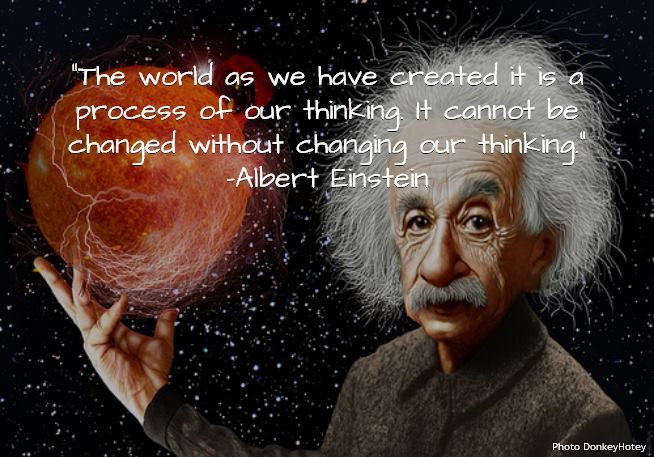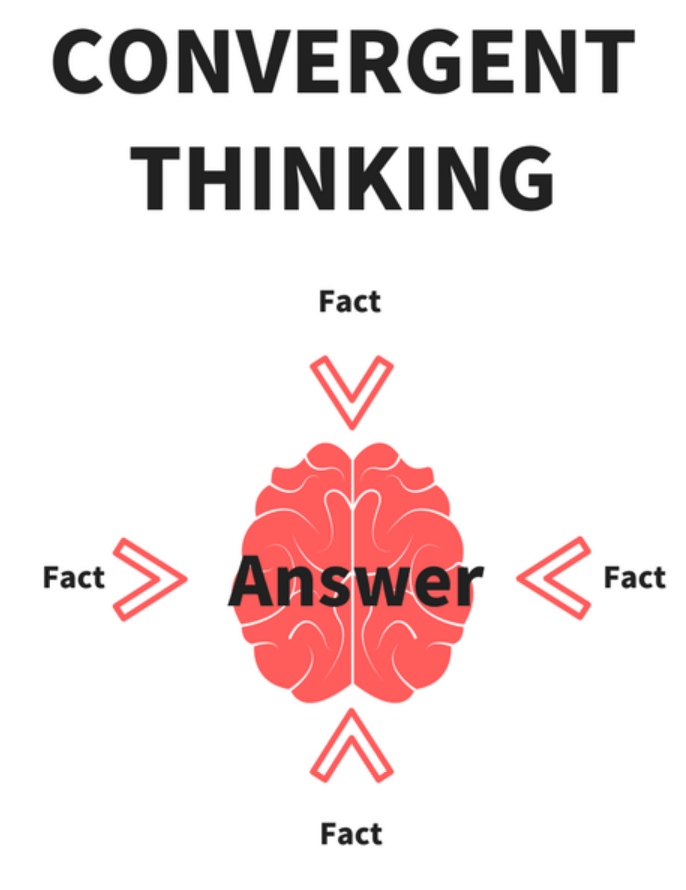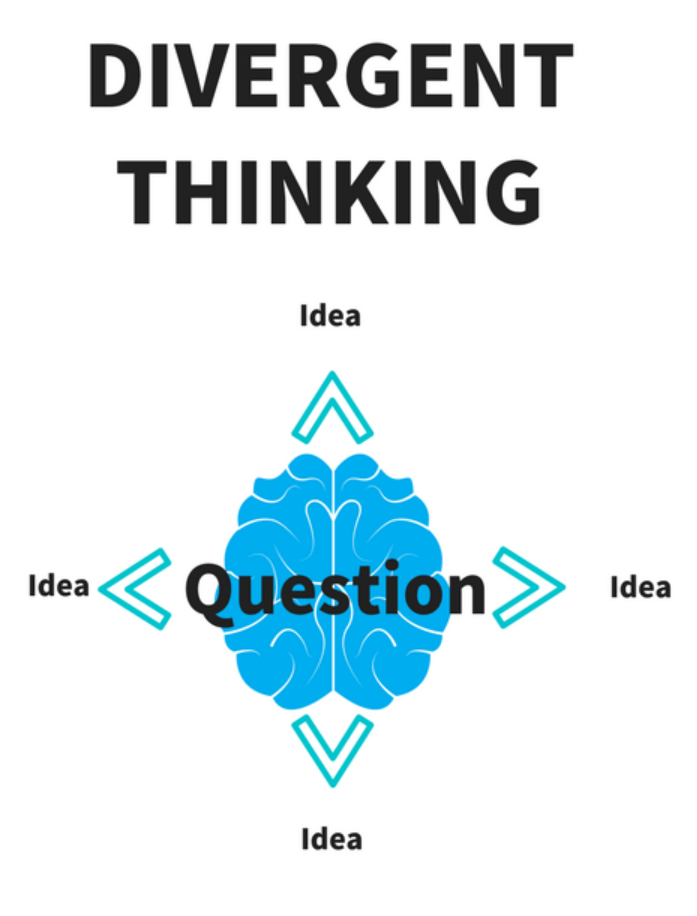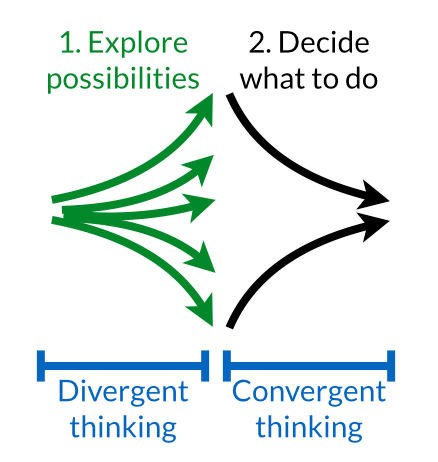
Truly original ideas happen when we develop our ability to think about a subject in lots of different ways and combine them in ways that no one has before. Like any skill, effective thinking takes practice. The first step is understanding these types of thinking. (Estimated reading time: 4-5 minutes)
“Your mind is your greatest power. Use it well.”
— Aneta Cruz
Take a moment, right now, to stop and look around you. Everything manmade you see began as a thought—from the electronic device you’re using to read this article to the clothes you’re wearing.
Creative ideas are everywhere, and everyone is capable of them. What differentiates someone who leverages these ideas from those who don’t, is their willingness to act on impulse and give shape to what they can imagine.
Schools don’t teach us this method of thinking, and most of us must work it out for ourselves. We’re taught a lot about what to think, but not enough about how to think.
No skill is more valuable and harder to come by than the ability to think critically and creatively. Whether you’re trying to decide which brand of toothpaste to buy or which job offer to accept, good thinking produces better decisions, which in turn leads to more satisfaction.
Those who practice these types of thinking not only make better life choices, but come up with the most brilliant innovations. Geniuses such as Einstein, Da Vinci, and Marie Curie were not only well-versed in their fields, but were skilled at using their minds to manage and process information. Their approach to problems and their style of thinking generated high quality ideas.

The word “idea” comes from the Greek word “idein” which means “to see”. It represents an archetype or ideal—a perfect form. They saw it as the conception of something new, but it’s up to us to give birth to it.
If you observe the process of idea-generation in the brain through an MRI scan, you’ll see the stimulated parts light up as connections are made between neurons. When you know how to think, you’ll be able to stimulate your brain cells and increase connections, or “synapses”. This ignites the mental fireworks that lead to creative breakthroughs.
Truly original ideas happen when we develop our ability to approach a subject from different angles and combine disparate ideas in ways that no one else has before. Like any skill, effective thinking takes practice. The first step is understanding the types of thinking modes.
Broadly speaking, there are three types of thinking that can help boost your brain power:
1. Convergent thinking: This type of thinking is used to solve a problem and come up with a single solution or answer. This often involves the use of probabilities and standards, while following established methods to form judgements. It provides structure and organization.
Thinking mode: Logic, linear, analytical, and critical thinking.

2. Divergent thinking: This type of thinking is free-flowing, non-linear, and spontaneous. It generates creative ideas and possible solutions. Many unexpected connections may form in a short time, and more emphasis is placed on the quantity of ideas versus the quality.
Thinking mode: Imagination, brainstorming, and creative thinking.

3. Lateral thinking: Thinking laterally occurs when we’re able to build a working relationship between convergent and divergent thinking. This is a creative and indirect approach that uses a combination of creative ideas and known facts and logic to problem-solve and innovate.
Thinking mode: Uses a mix of convergent and divergent thinking to “think outside the box”.
There are some people who lean more towards divergent thinking (typically the “artsy” creative types), while others gravitate toward convergent thinking (like accountants and executives).
To achieve creative success, however, you need both convergent and divergent thinking.

The flurry of ideas and discussions delivered by divergent thinkers is no good without the structure and directions to execute them provided by their convergent-thinking peers.
Although you will feel more at home with one mode of thinking over the other, you can develop both types with practice. You will boost your brain power by knowing when to use convergent and divergent thinking (or the right mix of both), for a specific task you tackle—whether you’re trying to solve a math problem or understand your values and purpose.
According to Robert Greene, author of “Mastery,” we also need to have the right attitude to express our ideas. He says that “masters” can blend a child-like and spontaneous energy with a patience, diligence, and discipline that’s tantamount to gaining mastery.
This active, transformative mindset, to which he refers to as “The Dimensional Mind,” can digest everything it takes in and converts it into something new, original, and cutting-edge. This contrasts with “The Conventional Mind” that passively consumes information and regurgitates it.
Greene offers three ways to achieve the “Dimensional Mind”:
1. Become aware of how social conditioning and the pressure to conform, is tightening your mind and limiting your freedom to explore and discover new subjects.
2. Absorb the details of your area of interest to gain expertise, then tap into your creative and free-flowing mind to make associations and connections based on what you have learned.
3. Stay flexible and remain open to taking creative risks. Don’t allow the fear of failure and ridicule limit you to familiar habits and ways of thinking. To think outside the box you must continually challenge yourself and explore new territory.
Your brain is capable of amazing things. It’s a portal that can transport you to distant galaxies and is your repository of limitless ideas that can solve vexing world problems. By using these types of thinking, tap into your brain’s full potential and boost your brain power, you unleash a passion that’s unique to you and your gifts.
All my best on your journey,
Seline

Questions for you: Are you more of a convergent or a divergent thinker? What can you do to strengthen your less dominant side?
Did you like this post? Sign up below, and I’ll send you more awesome posts like this every week.

The social conditioning aspect is a big one for me. As someone who is trans, social conformation and norms get forced down people’s throats. We are raised to think that the way society sees us and values us is the only thing that matters.we give up a big part of who we are for the sake of fitting in and not being ridiculed, attacked, and judged. I am glad things are finally starting to get better for people like me, but there is still a long way to go to break those chains and to allow ourselves to truly be free and creative and to be who and what we were meant to be with our thinking.
Jax my friend, I feel you! It is so sad how much influence social norms have over us! It affects how we things, act, feel, dress, talk, what careers we choose, who we fall in love with…. at some level social prejudice and social thinking can affect every area of our lives. I know for me, once I realized this I made an effort to not let this affect me as much. It’s been hard but I have made progress and feel can be more thoughtful and deliberate with my life now.
You are so right Jax! I think this is a source for a lot of people’s anger, hurt, and negative views. This one part of our lives has such an impact and we often don’t realize just how big that impact is till we take a step back and think about it and look at it from a different perspective.